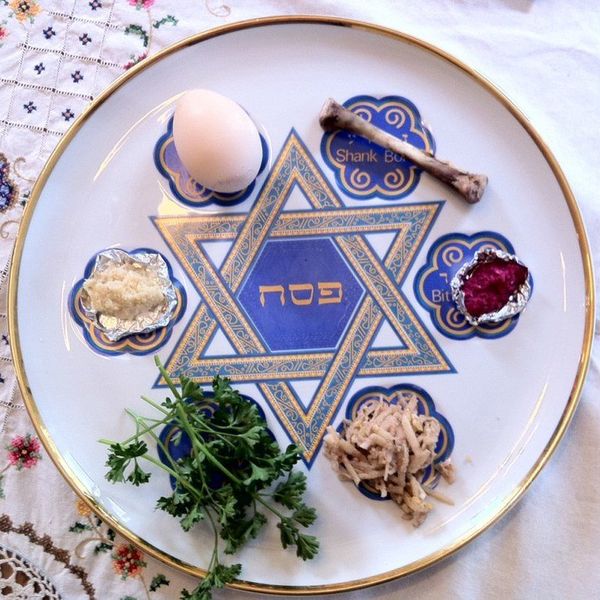About every two weeks, I tell myself that I am going to start eating healthier. I give myself a little pep talk (in my head of course) and promise that starting the next day, I will be more conscious of what I eat, and I will try to cut out most desserts while sticking to all-natural, organic foods that are rich in nutrients and low in fat. Does this sound familiar?
An article in the Wall Street Journal from 2014 reported that Americans, although very slowly, are starting to eat healthier as a whole when compared to the diets of Americans in 2003. This is great for a number of reasons, but there is still one catch to eating healthy. What do you consider to be healthy? The food in the grocery store labeled all-natural, organic, fat-free, multigrain, vegan, or gluten-free? That would be logical wouldn’t it? But, the food industry doesn’t always work that way. There are a lot of deceptive labels when it comes to buying food it’s pretty terrifying. I’m not writing this to scare you, or to make you feel bad about buying junk food. I’m simply here to inform you on a few things I learned while researching the labels of healthy food, so you can be more cognizant next time you go to the store.
Recommended for you
Some key words are misleading and some are actually what they say they are, so you need to be able to tell the difference.
Health magazine wrote an article titled: “16 Most Misleading Food Labels,” arming us with the information we need to battle the attractive labels at the grocery store:
“All natural,” is not even defined by the Food and Drug Administration, so some companies interpret it loosely. Be sure to read the ingredients as well, looking for unnatural or unrecognizable names that are typically preservatives, or for high fructose corn syrup.
When you’re looking at bread, don’t fall for the words “multigrain,” or “made with whole grain.” That leaves a lot of room for interpretation. Choose the breads labeled “whole grain,” or “100% whole wheat.” They are more direct and definitive, so no lies can slip in between the “100%” or the “whole.”
The phrases--no trans fat, or 0 trans fat, doesn’t actually mean there isn’t trans fat in it. Ridiculous, right? What do we have to do to get the truth here? Some foods that boast these titles can actually contain less than 0.5 grams. If you have a lot of servings it can add up.
The label “gluten-free” doesn’t automatically mean it’s better for you.
While cutting out bread and pasta can be a lot healthier for you, (especially since a scary amount of bread is full of poisonous preservatives) buying everything that says gluten-free is not recommended if you aren’t actually allergic. In fact, you can gain weight on a gluten-free diet if you aren’t careful. A video made by Consumer Reports says that when you buy gluten-free items such as muffins, brownies and cookies they typically contain more sugar and fat to make up for the consistency gluten usually fills. They also reported that a lot of nutrients can be missing such as iron or folic acid. So if you’re going gluten-free, only buy the essentials, and try not to replace all your food with the GF option.
If a food looks like it should have sugar in it, and it says sugar-free, it’s most likely not healthier.
Cookies? Soda? Yogurt? Ice Cream? Sometimes we see the first two words sugar-free, and we immediately feel better about buying it. I hate to say it, but they are actually worse for us if it’s food that should generally contain sugar. Instead of putting sugar in, it is replaced by artificial sweeteners. Names such as Sucralose (Splenda) and Aspartame are well known, but they aren’t better for you than pure sugar. They are merely chemicals that are unnatural for your body. The Harvard Health website says that they may lead you to crave more sugar because it can leave your sweet tooth unsatisfied. Natural sweeteners like honey or agave are a better alternative.
When a food claims it’s low-fat or fat-free, it can actually be worse for you.
Low-fat or “fat-free,” cookies, candies, soda, cereal, muffins or anything like that can actually contain a lot of sugar and other unnecessary ingredients to make up for the loss of fat. There are plenty of foods that are high in fat and are good for you because there are different kinds of fat. Fish, avocados, and nuts are all high in fat, but they are all a healthy option.
Next time you want to eat healthier and you make a trip to the store, keep these things in mind. It would be nice if we all paid the price for healthy foods that are actually healthy. The downside to having a world with such a variety of food options is that there is more room for fabricated chemicals to be created so we can keep our food longer, ship it to far places, etc. It’s pretty hard to avoid eating these chemicals unless we spend a lot of money and time researching, but we can at least try to minimize our intake.


















